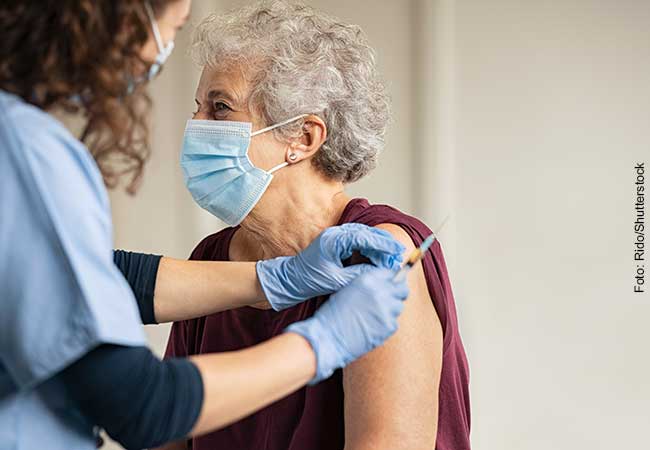Despite rising infection numbers, contact restrictions could be avoided if the vaccination rate were fast enough. Professor Claudius Gros from Goethe University Frankfurt and Dr Daniel Gros from the Center for European Policies Studies in Brussels have developed a simple mathematical relation which allows to estimate the rate of vaccination necessary to maintain control of the pandemic without a lockdown and while avoiding overwhelming the health system and a spike in death rates. The study has been vetted and is forthcoming in Covid Economics.
As it has from the beginning, the pandemic continues to primarily affect older people. If the entire population of Germany became infected with SARS-CoV-2, statistically 1.5 million of those over 60 would die; among those under 60, the death toll would „only“ be 75,000. This is why – in addition to certain particularly exposed population groups – vaccination strategies often prioritise the elderly with the aim of avoiding overburdening the health system with severe COVID-19 cases and high death rates. After all, vaccinating just a quarter of the population can prevent 95 percent of deaths.
Professor Claudius Gros from the Institute for Theoretical Physics at Goethe University Frankfurt and Dr Daniel Gros from the Center for European Policies Studies (CEPS) therefore focused on the older segment of the population when developing their vaccination formula. They show that COVID-19 fatalities are determined by three factors: The infection rate, the dependence of the risk on age, and the structure of the age pyramid. Germany, like almost all European countries, is particularly susceptible to the third wave: the average age of the population is high, the new mutant is highly infectious, but the vaccination rate is only slowly increasing. To keep the effects of the pandemic manageable, extensive contact restrictions are therefore necessary in order to keep infection rates low.
According to the two scientists, a rule of thumb can be used to determine the point at which it is possible to relax: They put the weekly increase in the number of infections in relation to the increase in vaccinations per week. Simplified, the relationship is as follows: If x percent more of the population falls ill per week, an additional x*f/100 percent of the population must be vaccinated in the same period. The factor f, which was f=2 at the beginning of the vaccination campaign, increases when part of the population has already been fully vaccinated. Currently we have f=6. This means that if the infection incidence increases by x=20 percent per week, 20*6/100=1.2% of the population would have to be additionally (fully) vaccinated. This applies to the vaccination doses administered by age. It should be taken into account that two vaccination doses are necessary for complete immunisation.
Dr Daniel Gros explains: „Given the low current vaccination rate, the 7-day incidence per week should not increase by more than 13 to 16 percent to prevent the health system from being overwhelmed. Over the past weeks, however, infection rates have increased by 25 percent, making extensive contact restrictions inevitable, otherwise aggressive mutants are likely to spread.“
Prof. Claudius Gros says: „The relation we developed allows for a simple and quick estimate of how quickly we would need to vaccinate to keep the consequences of the pandemic for the health system manageable. Unfortunately, we have failed to incentivise pharmaceutical companies to rapidly scale up production, which is costly and resource-intensive, for example through higher prices for an earlier production of vaccine doses. Therefore, as we predicted in an earlier paper, companies have opted for a slow linear increase in production. From a business point of view, this is cost-effective, but it results in us not having sufficient amounts of vaccine available fast enough.“
Publication: Claudius Gros and Daniel Gros, „How fast must vaccination campaigns proceed in order to beat rising Covid-19 infection numbers?“ in: Covid Economics (in press), https://arxiv.org/abs/2103.15544








